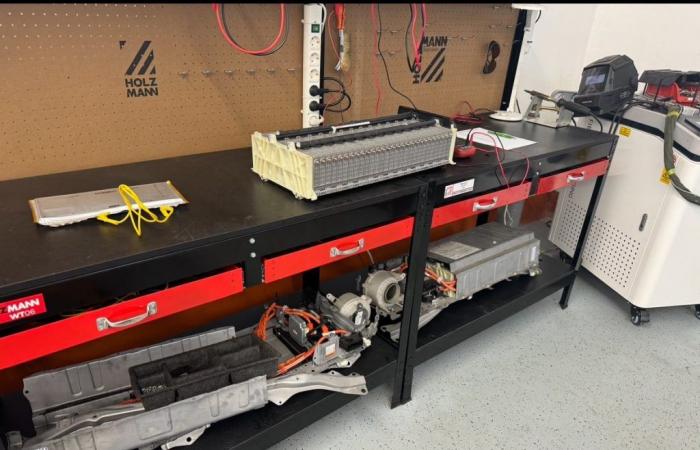Toyota cars are known for their reliability. But what about hybrid models? A recent study points to the unreliability of Toyota hybrid car batteries, which fail “after 80,000 km” for some or “180,000 km” for others. The cause? A totally flawed design.
Some opponents of the electric car think that the hybrid car is a more judicious choice, whether for autonomy, but also for ecology. Toyota is the manufacturer that stands out the most in this battle, since the boss of the Japanese manufacturer has been loudly proclaiming for several months that the electric car is not the only solution to decarbonization. And that’s normal, when we know that Toyota is late on electric cars, and that it sells hybrid cars like hot cakes.
The problem is that, as the Croatian repairers from EV Clinic remind us on X (ex-Twitter), “ a Toyota car is a better choice than a diesel, but not better than an electric car“. Why? Because of the reliability of their battery. We already knew that many plug-in hybrid cars had reliability problems, because of the design of their battery.
Outdated battery technology
This time, the analysis focused on Toyota hybrid cars, since EV Clinic sees many of them pass through its workshop. It must be said that the battery specialist garage takes care of the maintenance of two fleets of taxis which use Toyota hybrids. Enough to have interesting data on these cars.
The problem with Toyota hybrids is that they “ use cells with outdated NiMH technology, with poor battery design, which causes the cells in the middle to overheat ” EV Clinic tells us before adding that there is ” only 2 or 3 temperature sensors, and no redundant protection system in case of lack of cooling« .
The consequence is that certain cells “ stop working at 80,000 km, others at 180,000 km“. Some owners manage to make the battery last much longer, but at the cost of enormous maintenance, as the Croatian expert explains: those who regularly disassemble, repair and replace faulty cells can travel up to 750,000 km“. But then it is no longer the original battery.
The worst part is that drivers don’t even realize that their battery is degrading. Because the car doesn’t necessarily give an error, because the monitoring system doesn’t analyze the voltage of each cell. For example, in some cases, the capacity of the middle cells drops to 2 Ah or less instead of the basic 6.5 Ah. But the system doesn’t show any errors.
The consequence is gasoline consumption which increases in the city, because of the electric autonomy which decreases because of these degraded cells.
EV Clinic takes the concrete example of certain cars which run in the two taxi fleets for which the garage takes care of maintenance. The observation is alarming.The batteries arrive here destroyed, after 200,000 to 250,000 km, with 8 to 15 cells out of service, which represents more than half the capacity of the battery pack. » before adding that “ some batteries have already been opened, with the signature of 2 or 3 different mechanics, at 400,000 km“. Proof that they have already undergone repairs.
So yes, as EV Clinic reminds us, “ Toyota actually has the cheapest hybrid battery system in the world“. But is it really a good deal when you realize that the design of the system is flawed?
Tips for limiting breakage
If you are the owner of a Toyota hybrid car, Croatian experts give some advice. The first is to use the air conditioning in the passenger compartment on the low position (to blow on the feet) in summer, in order to circulate cold air on the floor. The battery in fact partly uses the air from the passenger compartment to cool itself.
The second piece of advice is to dismantle the battery every 50,000 km, and clean all the air cooling channels, which can be blocked by dust. The problem is that it only takes one trip with the battery overheating for a cell to fail. Regular maintenance is therefore an absolute necessity so that the battery lasts as long as possible.
Remember that electric car batteries are designed to withstand much higher temperatures and mileage. This is made possible by the use of different chemistry, lithium (NMC and LFP in particular) adopted by the new Prius, but also and above all by a much more advanced liquid cooling system and a design which analyzes each cell independently.
Let’s also take this opportunity to point out that it is possible to change a cell on a battery, without having to change the entire pack. This allows you to extend the life of the batteries without spending several thousand euros.
Want to find the best Frandroid articles on Google News? You can follow Frandroid on Google News in one click.






